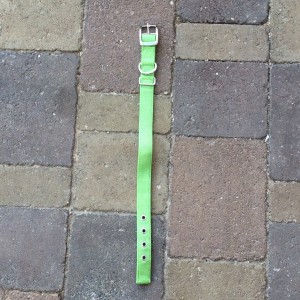One type of aggressive dog training in Hawaii deals specifically with dog-to-to aggression. A dog that is aggressive to other dogs, fights and growls at other dogs or lunges and barks at other dogs while on a walk may have a problem. Treatment for this problem is on a case by case basis. However, here is a summary of a five lesson plan that touches on certain training aspects that can help one type of aggressive dog training in Hawaii: dog aggression towards other dogs. This article approaches aggressive dog training in Hawaii as two hour sessions. However, when the time is increased per session, more can be accomplished in fewer training lessons. (Visit the home page for more general issues.)
Aggressive dog training in Hawaii. First lesson.
Leash walking, come when called, and toy training. The first step entails regular leash walking. A dog that pulls on the leash without any distractions is more likely to lunge when there is a distraction. That distraction can be another dog, a cat, a chicken, or a human being. So we first address walking gently on the leash without any provocations. Use a standard leash that is six feet long, And a regular collar around the neck that buckles like a belt. It’s important to not use training gadgets that claim to curb leash pulling because these “quick fixes” become a obstacle to learning at higher levels. After pulling on the leash, then we work on come when called. Come when called is an essential training command on which other commands (like retrieve) are based. The first steps of toy training are introduced to the owner. The dog must be introduced to high level and low level toys. Teaching a dog to interact with a high level toy requires homework on the part of the owner. This is done outside of the lesson time with the dog trainer.

Second lesson: Retrieve and sit, lay down and stand. After a dog knows how to come when called, he or she is ready for retrieve. Retrieving a ball (or toy) is a bonding exercise between the owner and the dog. This exercise will help the dog to be more sensitive towards the owners concerns—like being jerked around. Then we work on sit, lay down and stand (i.e. on four legs). These commands can be taught using hand signals, visual, or physical cues that help the dog go into a desired position. In the final stage, the hand signals or assisting cues will be removed and the dog should be able to sit, lay down or stand only on a vocal signal. This is important when dealing with an aggressive dog because in a conflict situation, the dog is not going to be looking at you and your hand signals. He’ll be staring at the other dog.
Third lesson: Stay and leave it. We teach the dog to stay from a lay down position, a sitting position and a standing position. This training tool can be applied to a conflict situation when the dog is approaching another dog. Stay means relax. Now the dog learns the “leave it” command. “Leave it” means do not do something. In other words, “leave it” simply means “no.” I deliberately do not start with teaching a dog “no” because a dog will be more receptive to obeying “no” if that command is part of a varied routine that includes other commands which say “yes.”
Fourth lesson: The send out and freeze. Up until now, all the lessons have been based on the dog either facing the owner or coming towards the owner. The next phase (more advanced) entails teaching a dog to listen while moving away from the owner. One example of a send out can be telling a dog to go to its bed and lie down. The send out is often overlooked in many dog training classes. A send out command is very applicable to an aggressive dog situation because it addresses an important element – how to make the dog listen to the owner while the dog is moving away from, or not facing or a distance away from, the owner. Next is the freeze command. Freeze teaches a dog to stop in mid-flight. First the dog learns to freeze while running towards the owner. Later, the dog learns to freeze while running away from the owner and this combines with the send out. This tool comes in handy if the dog is running to attack another dog. Now you will be able to stop him in mid-flight when you yell, “freeze!”
Fifth lesson: Slow motion and advanced retrieve exercises. Teaching a dog to move in slow motion is valuable for any type of aggressive dog training in Hawaii, especially a dog that is reactive to dogs, or even cats. Slow motion is just what it sounds like. The dog learns to come or move away at a very s-l-o-w speed. We’ll do some leash walking with distraction exercises. Using a tool that provokes the dog, we’ll teach the dog to ignore the distraction, or walk past the distraction in s-l-o-w motion. Next we practice advanced retrieve exercises where we use multiple objects and we’ll direct the dog to stop chasing object A and instead go for object B. This diversion exercise is applicable to a dog that is aggressive to other dogs because he has a tendency to “lock in” on a target. The advanced retrieve exercises teaches a dog not to “lock in,” but to try a healthy alternative.
Training aspects are taught separately and then mixed together when the dog understands the commands separately. If a dog owner starts aggressive dog training in Hawaii with previous dog obedience knowledge, then the total training time may be faster than teaching a dog that has not had prior obedience lessons.



